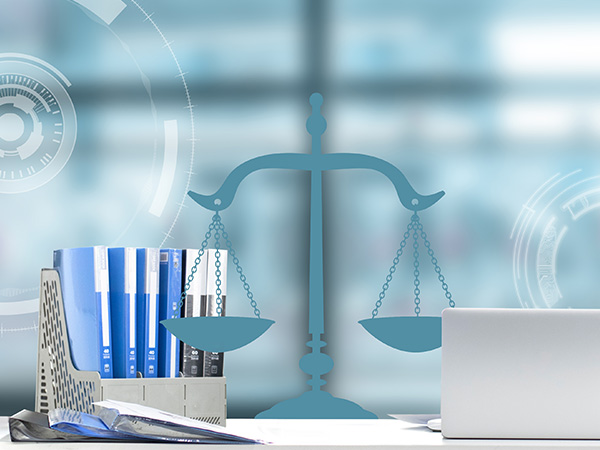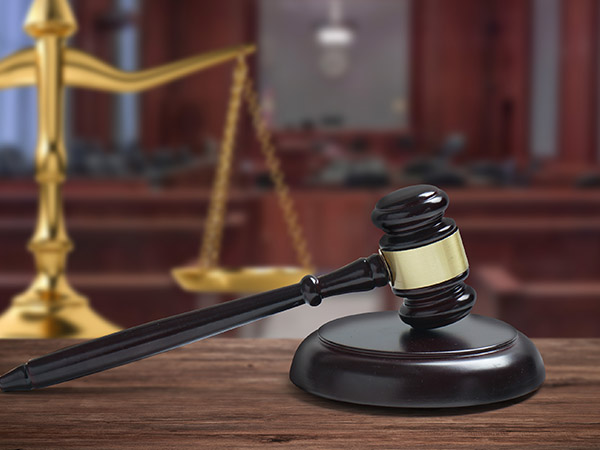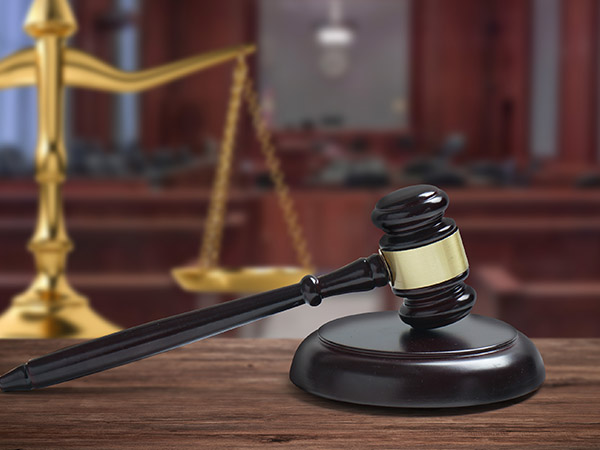
Since the Beijing Internet Court accepted the "Beijing Film Law Firm v. Baidu" case in 2018, the issue of protecting AI-generated works has formally entered the judicial domain in China. The conclusion of the "Tencent v. Shanghai Yingxun Technology Co. Ltd." case by the Nanshan District People's Court of Shenzhen in 2020, which had a different ruling outcome on the surface, further sparked extensive discussion on this issue among scholars and judicial practitioners. In this context, the demand for judicial organs to give relatively consistent rulings based on clear adjudication standards has become evident within the AI industry, particularly for the direct producers and users of AI-generated works, impacting the industry's survival and development.
The Beijing Internet Court's trial of the "AI-Generated Images" case in 2023 has deepened the debate on this issue. Its adjudication approach and final ruling have provided timely guidance for the current development of AI industry, offering a feasible path for judicial protection of AI-generated works within the existing legal framework. In the long run, legislative and judicial protection are both essential, considering the impact of AI on national core competitiveness and human well-being. For now, the exploration of judicial protection has taken the lead in China, and through the adjudication of specific cases, a judicial protection standard and rules with Chinese characteristics are gradually forming.
Adjudication Analysis of the "Beijing Film Law Firm v. Baidu" and the "AI-Generated Images" Cases
Adjudication Approach in "Beijing Film Law Firm v. Baidu" Case
In this case, the plaintiff, Beijing Film Law Firm, claimed that on September 9, 2018, it first published the article "Analysis Report on Judicial Big Data of the Entertainment Industry—Film Volume·Beijing" on its WeChat official account. On September 10, 2018, the defendant, Baidu, published the allegedly infringing article on its "Baijiahao" platform without permission, removing the author’s name, introduction, search overview, annual trend chart of the number of cases in the film industry, and the endnote section from the original article. This, according to the plaintiff, infringed on its rights of communication through information network, authorship, and integrity. The analysis report in dispute was generated using AI software that combined input keywords with algorithms, rules, and templates.
Upon review, the court held that, according to the basic principles and provisions of the copyright law, written works should be created by natural persons. If the current legal framework can fully protect the intellectual and economic investments in AI software, it is not appropriate to break the basic norms concerning civil law subjects. Therefore, the court concluded that the analysis report in dispute was generated by the plaintiff using the AI software. Even though it met the requirements of originality in form, it was not created by a natural person and thus did not qualify as a work protected under current copyright law. The court dismissed all of the plaintiff's claims and pointed out that software developers could gain returns through software usage licenses, and software users who pay to use the software and set themes or perform searches could be granted corresponding rights to encourage the creation and dissemination of related content. 1
Adjudication Approach in the "AI-Generated Images" Case
In this case, the plaintiff Li XX claimed that on February 24, 2023, he used the open-source software Stable Diffusion to generate the image in dispute by inputting prompts and then published this image on the "Xiaohongshu" platform under the title "Spring Breeze Brings Tenderness." The defendant Liu XX, without permission, posted an article titled "Love in March, in Peach Blossoms" on the "Baijiahao" platform operated by Baidu, using this image and cropping out the plaintiff's watermark. The plaintiff argued that this action misled users into believing that Liu XX was the author of the image, thus infringing on his rights of authorship and communication through information network.
Upon review, the court held that the image in dispute qualified as a work under copyright law. Its appearance was similar to common photographs and paintings, clearly falling within the artistic domain and possessing a recognizable form of expression. The image was generated by the plaintiff using generative AI technology. The plaintiff designed visual elements such as the character and its presentation through prompts, and adjusted parameters for the layout and composition, which reflected his choices and creative input. The iterative process of adding prompts and adjusting parameters to finalize the image also demonstrated the plaintiff’s aesthetic decisions and individual judgment.
In the absence of evidence to the contrary, the court concluded that the image was independently created by the plaintiff, embodying his unique expression and meeting the originality requirement. As a two-dimensional visual art piece composed of lines and colors with aesthetic value, the image is considered a work of fine art and is protected by copyright law. The AI model designer did not create or preset the image content and was merely the tool provider, not the author. Therefore, the AI designer is not considered the author of the image. The plaintiff, who directly configured the AI model and selected the final image, is recognized as the author and holds the copyright.
The court thus determined that the defendant infringed on the plaintiff's rights of communication through information network and authorship regarding the image and should be held liable for the infringement. 2
Analysis of the Adjudication Approaches in the Two Cases
Judging from the ruling results, the adjudication approaches in the above two cases may appear to be entirely different. However, it can be argued that the "AI-Generated Images" case is a continuation and development of the "Beijing Film Law Firm v. Baidu" case. Both cases uphold the idea that copyright law protects works created by natural persons and that AI software serves merely as a tool for creation.
The differences between the two cases primarily lie in: "First, the technical principles of the AI software involved; and second, the extent of human involvement."3 The "AI-Generated Images" case reflects a proactive approach to judicial practice, creatively applying the provisions and principles of copyright law in consideration of the technical features and level of the AI software involved. It recognizes human contribution to the creation of AI-generated works, thereby qualifying the generated work as an object of copyright protection.
Challenges in the Judicial Protection of AI-Generated Works
In the government work report presented at this year’s Two Sessions, the "AI+" initiative was highlighted to foster internationally competitive digital industry clusters. Generative AI models, with their advanced technology, rapid iteration, and involvement of multiple stakeholders, present significant challenges for judicial protection. Issues such as the protection pathways for AI-generated works, their copyrightability, and the assignment of liability have become prominent concerns.
Challenges in Selecting Protection Pathways
In recent years, legal protection for new types of assets emerging from technological advancements—such as sports event footage, online games, and data rights—has become a prominent and challenging issue in judicial practice. Judicial opinions on these matters vary, and AI-generated works face similar uncertainties. Currently, the primary judicial protection for AI-generated works falls under copyright law. Although there is significant support for recognizing the copyrightability of AI-generated works, it must be acknowledged that only certain works may qualify for copyright protection. Those that do not qualify for copyright should not be left without legal recourse; rights holders can still seek protection through alternative legal pathways, such as the Civil Code or anti-unfair competition laws. Given the diverse legal protection options available, judicial adjudication must navigate a range of complex issues and challenges.
Challenges in Copyrightability Review
Theoretically, adopting the stance that "AI serves only as a tool" can clarify the role of AI content creators as the subject and affirm the originality of AI-generated works. This approach supports the principle of distinguishing between the subjects and objects under current copyright law and provides a theoretical basis for judges to assess the copyrightability of AI-generated works. However, in practice, the judicial review of copyrightability for AI-generated works remains complex. Unlike traditional works, the review of AI-generated works focuses on the subject identity, the tools used, and the generation process.
For instance, in the "AI-Generated Images" case, the plaintiff must not only present the original artwork but also explain the AI software's operational principles, the generation process (including input steps, choices, output content, and subsequent processing), to assist the judge in a comprehensive evaluation. Unlike manually created artwork, which can be initially validated for originality and ownership with the original or a draft, rights holders of AI-generated artwork need to provide extensive process documentation. Differentiating software principles and the generator’s contribution to determine which generated works display originality and qualify as works involve subjective judgments, potentially leading to disputes. Furthermore, as AI software typically requires large datasets or existing works for training, the generated content might also involve rights of these data or work owners. These challenges increase the evidentiary burden and complexity of judicial review. Rights holders of works that may not qualify for copyright protection might be tempted to conceal the use of AI to avoid complicated evidentiary requirements, which can result in different judicial review standards for copyrightability between human-created and AI-generated works.
Challenges in Determining Infringement Compensation
At present, AI-generated works eligible for copyright protection should be treated the same as human-created works in terms of infringement identification, adhering to the "access plus substantial similarity" standard. However, determining the specific amount of compensation poses new challenges. According to Article 54 of the Copyright Law, the court may consider or refer to the actual losses of the right holder, the illegal gains of the infringer, or the amount of royalties to determine the compensation. In judicial practice, it is hard to accurately calculate the actual losses of the right holder or the illegal gains of the infringer, and a market for AI-generated works reflecting royalty situations has yet to form. Therefore, statutory compensation is typically used to determine the amount. Given the higher efficiency and lower cost of AI-generated works, judicial decisions that legally support compensation amounts above five hundred yuan often lead to an imbalance of interests. It is acknowledged that some AI-generated works possess high creativity and market value, warranting higher compensation when infringed upon. Thus, reasonably determining the compensation amount for AI-generated works requires further efforts by judges during trials.
Challenge of Rising Case Volume
With the continuous development of the AI industry, authors, AI software developers and operators, creators and users of AI-generated works, and disseminators could all become the subject of litigation. The potential increase in the number of cases is a challenge that judicial authorities will need to address.
Principles for the Judicial Protection of AI-Generated Works
As generative AI technology and industry advance rapidly, the judiciary should play a leading role in safeguarding AI-generated works. It needs to focus on adapting to new developments and balancing interests, setting legal precedents through its rulings and ensuring effective protection through these rules.
Embracing Development and Adopting Proactive Judicial Approaches
Zhang Jun, President and Chief Justice of the Supreme People's Court, has highlighted the importance of adopting proactive approaches to judicial practice in the new era to support and advance Chinese-style modernization. The evolution of copyright protection systems globally has always been intertwined with technological progress. Given the profound effects of generative AI on human creativity, judges must stay adaptable, focus on technological innovation and industry trends, and provide forward-thinking rulings rather than sticking to conventions and outdated methods.
Strengthening Collaborative Governance and Protection
According to the "Research Report on AI and Intellectual Property Legal Issues (2023)" by the China Academy of Information and Communications Technology, the "14th Five-Year Plan" period presents a key opportunity to develop new advantages in AI technology intellectual property. Effective AI intellectual property governance that aligns with the development of AI technology needs to be established to provide crucial support for the high-quality development of the AI industry. The author believes that judicial protection is essential but not the only force. Protecting AI technology intellectual property requires collaboration among all stakeholders.
Firstly, while specialized laws and regulations for AI-generated works are not yet feasible, the Interim Measures for the Management of Generative AI Services, issued by the Cyberspace Administration of China and other departments, provides a legal basis for intellectual property protection of generative AI services at the current stage. To meet the legal needs of AI development, administrative bodies should strengthen legislative and policy-making efforts in AI-related subfields and specific issues. The highest judicial authorities can also issue relevant judicial interpretations based on consensus in judicial decisions to prepare for higher-level lawmaking and amendments.
Secondly, the coordination between administrative law enforcement and judicial trials should be enhanced. Exploring effective mechanisms for joint government-judiciary governance of AI-related infringement and leveraging the guiding role of judicial rulings are essential for promoting the sound development of the AI industry.
Thirdly, industry organizations should play a key role. Developing standardized industry practices and effective licensing systems is crucial.
Finally, fostering self-regulation among businesses is essential. Ensuring the legality of generated content through proper authorization and monitoring, along with strengthening platform review and dispute resolution processes, is necessary to manage infringement and protect creators' rights.
Balancing Protection and Development
Balancing interests among all stakeholders involves considering not just the protection of involved parties but also the broader economic impact of judicial outcomes.
Firstly, it's vital to protect the interests of investors in emerging AI technologies. Granting legal rights to AI-generated content can incentivize technological innovation and development, allowing AI technology investors to develope more advanced creative tools. This approach also motivates and enables them to obtain high-quality data for model training through legal authorization, which further promotes the protection and monetization of data rights holders' legitimate interests.
Secondly, the rights of AI software users must be safeguarded. The question of whether content created with authorized or open-source AI software should be protected by law is central to public and industry concerns. Encouraging AI-driven creativity, with content receiving legal protection under certain conditions, aligns with users' needs and supports their creative efforts. Judges should take this consideration into account when handling specific cases.
Thirdly, defining the responsibilities of content dissemination platforms is crucial. Since current technology cannot precisely detect AI-generated content, widespread dissemination of such content can impact the interests of its generators and pose challenges to platform management. It is essential to define these responsibilities within existing legal frameworks, especially copyright law, to ensure effective infringement governance and platform development.
To conclude, recognizing that some AI-generated works may qualify for copyright protection, based on theoretical, legal, and economic considerations, can encourage users to engage in creative activities using AI tools and support the ongoing and healthy development of the AI industry.
References:
1. See Beijing Internet Court Civil Judgment (2018) Jing 0419 Min Chu No. 239.
2. See Beijing Internet Court Civil Judgment (2023) Jing 0491 Min Chu No. 11279.
3. Zhu Ge, the Research on Legal Feature and Copyright Attribution of AI-Generated Images, Intellectual Property, 1 (2024)









